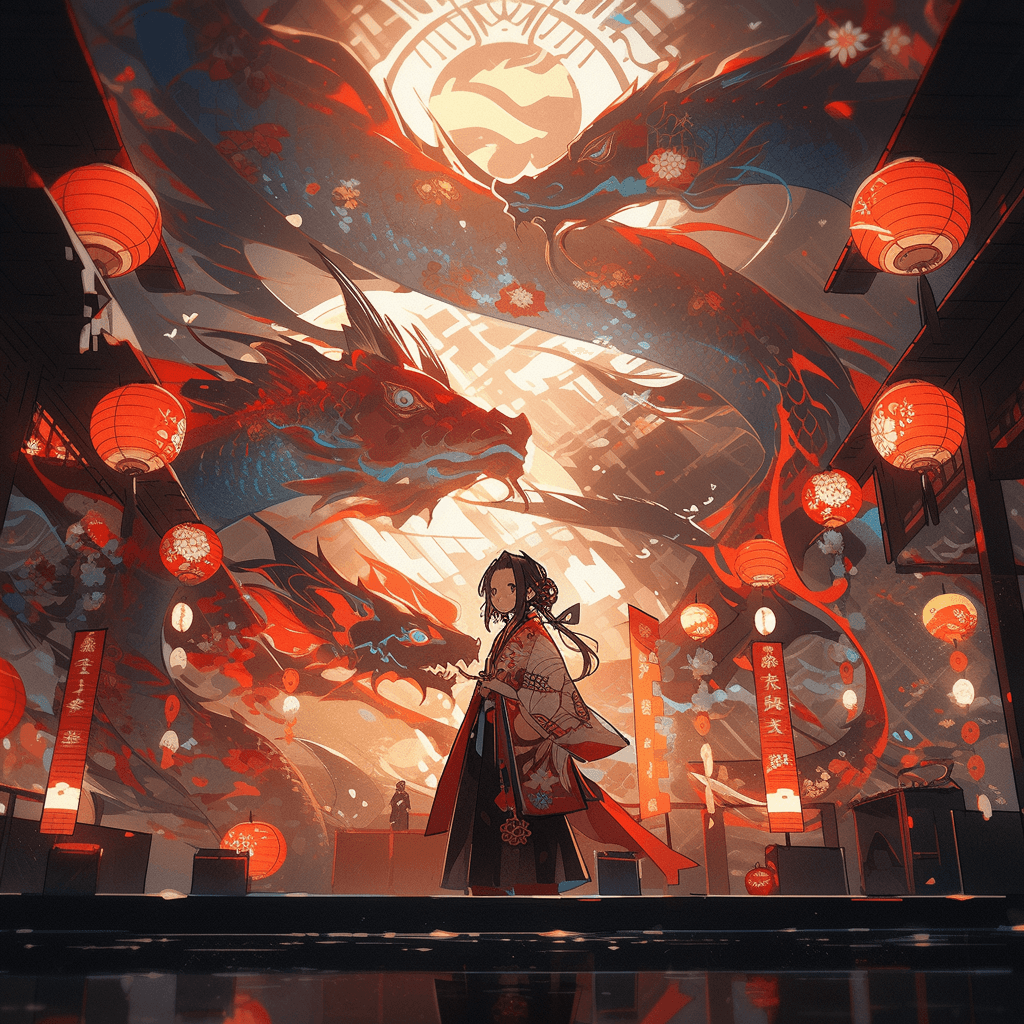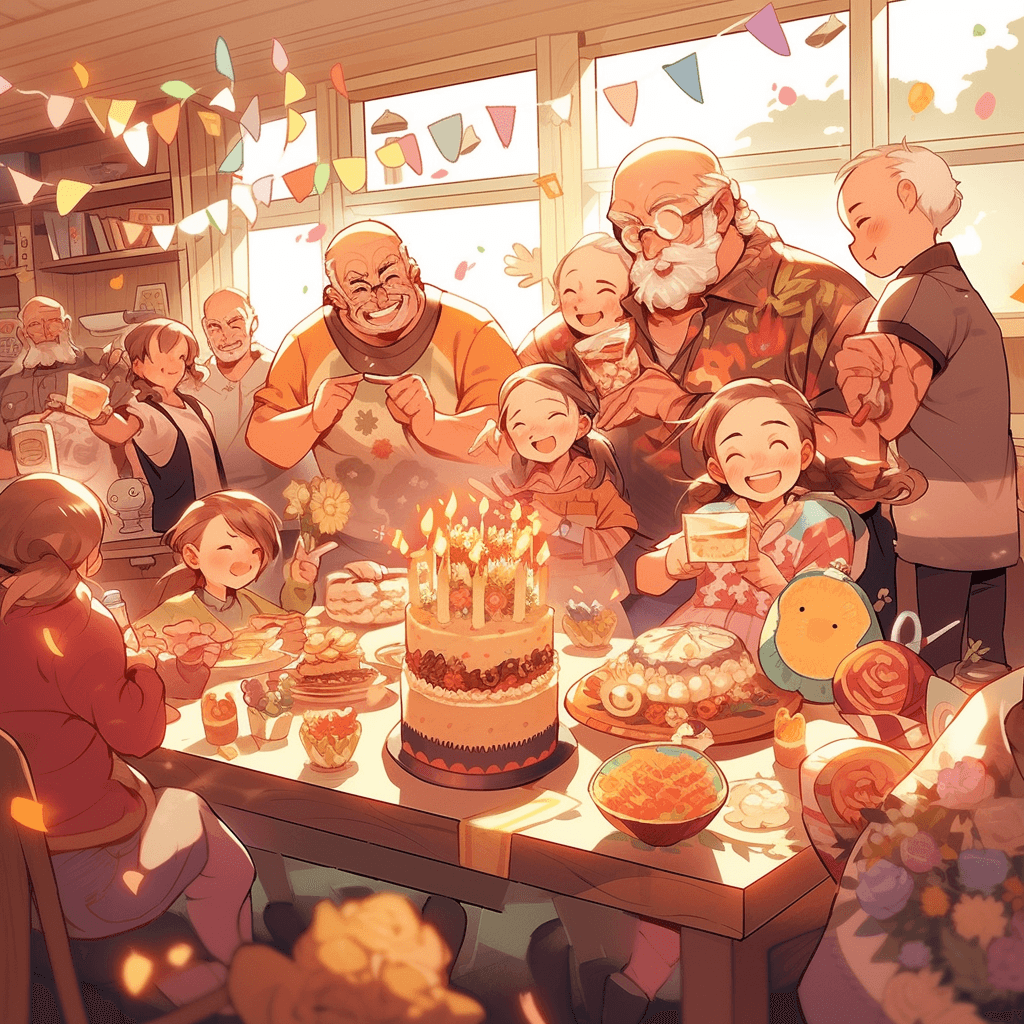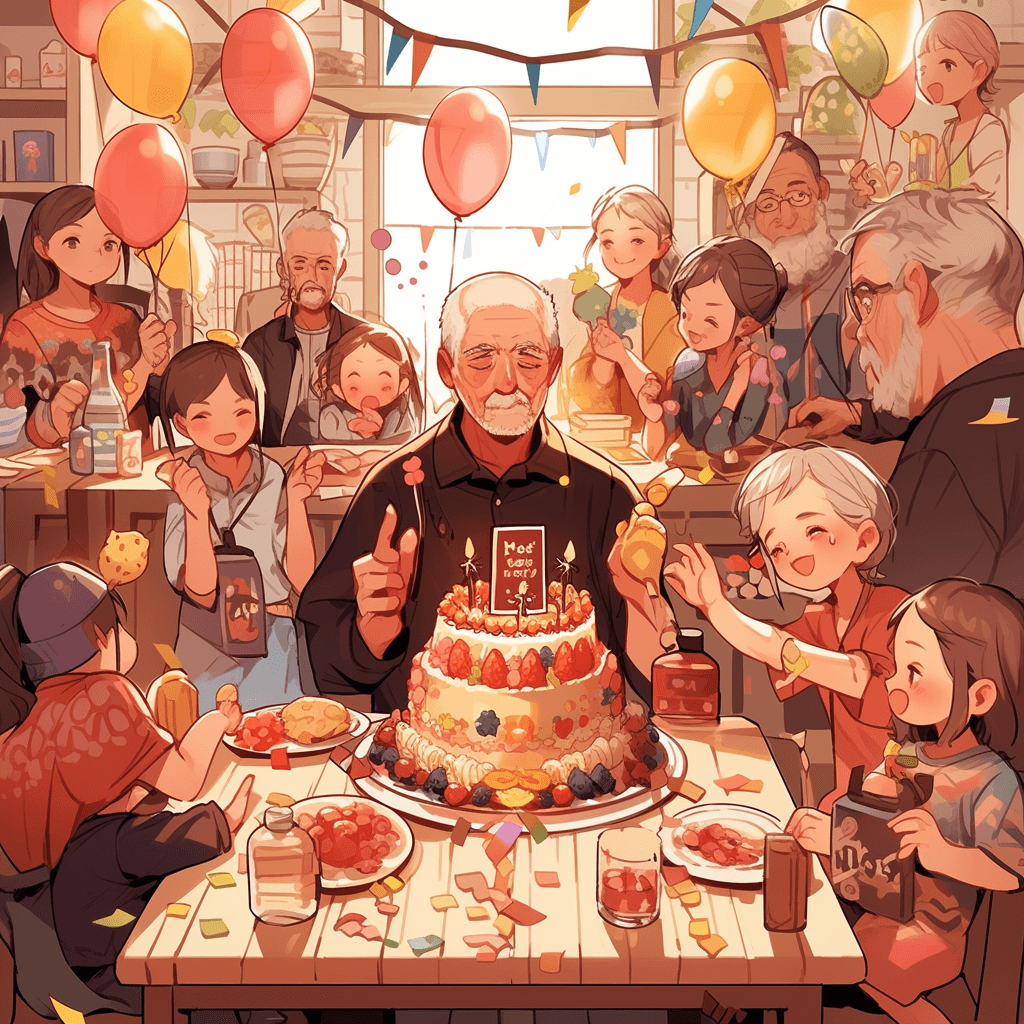藝術在台灣
兩千年的歷史,使台灣成為一個充滿藝術和文化的地方。從古代的書法和繪畫到現代的雕塑和攝影,台灣有著豐富的藝術遺產。許多博物館和藝術館展示著各種不同風格的作品,讓人們欣賞和了解台灣的文化。此外,台灣每年也舉辦許多藝術節和展覽,吸引著國內外的藝術家和觀眾。藝術在台灣綻放著獨特的光彩,為這片土地增添了一道美麗的風景線。
台灣的藝術之旅可以從台北的國立台灣美術館開始。這座現代化的建築裡收藏著大量的中國和台灣藝術品,包括古代書畫、陶瓷和現代裝置藝術等。在這個藝術殿堂裡,你可以深入了解台灣藝術的演變和發展。
走出美術館,南下前往台中的草悟道藝術村。這個獨特的藝術聚落是以風格各異的藝術創作和美食而聞名。你可以在這裡欣賞到各種類型的藝術作品,從塗鴉、壁畫到雕塑和手工藝品。同時,草悟道藝術村也舉辦許多展覽和工作坊,讓人們能夠親身參與和體驗藝術的魅力。
若還想要更深入了解台灣的藝術氛圍,可以再往南走到台南的赤崁樓藝術村。這裡保留著古老的風貌,藝術家們在這個歷史悠久的建築中展示他們的作品。你可以欣賞到才華洋溢的當地藝術家創作的繪畫、攝影和雕塑等。同時,也有不少藝術工作坊和教育活動讓人們更加了解和體驗台灣藝術的獨特魅力。
台灣的藝術之旅結束於高雄的駁二藝術特區。這個曾經的港口倉庫區已經煥然一新,成為台灣藝術家與市民交流和展示的聖地。遊走在這個特區中,你可以欣賞到各種形式的藝術作品,包括塗鴉、攝影和裝置藝術等。同時,還有許多藝術展覽和表演活動讓人們感受到高雄藝術的熱情。
藝術是台灣人民富有創造力和熱情的體現,無論是古老的藝術形式還是現代的藝術創作,都在台灣這片土地上綻放著獨特的光芒。台灣的藝術之旅,將帶領你穿越時空,體驗這片土地的豐富文化和藝術氛圍。讓我們一起走進這個美麗的藝術世界,探索台灣的奇妙之旅。
Yìshù zài táiwān
liǎng qiānnián de lìshǐ, shǐ táiwān chéngwéi yīgè chōngmǎn yìshù hé wénhuà dì dìfāng. Cóng gǔdài de shūfǎ hé huìhuà dào xiàndài de diāosù hé shèyǐng, táiwān yǒuzhe fēngfù de yìshù yíchǎn. Xǔduō bówùguǎn hé yìshù guǎn zhǎnshìzhe gè zhǒng bùtóng fēnggé de zuòpǐn, ràng rénmen xīnshǎng hé liǎojiě táiwān de wénhuà. Cǐwài, táiwān měinián yě jǔbàn xǔduō yìshù jié hé zhǎnlǎn, xīyǐnzhe guónèi wài de yìshùjiā hé guānzhòng. Yìshù zài táiwān zhànfàngzhe dútè de guāngcǎi, wèi zhè piàn tǔdì zēngtiānle yīdào měilì de fēngjǐngxiàn.
Táiwān de yìshù zhī lǚ kěyǐ cóng táiběi de guólì táiwān měishù guǎn kāishǐ. Zhè zuò xiàndàihuà de jiànzhú lǐ shōucángzhe dàliàng de zhōngguó hé táiwān yìshù pǐn, bāokuò gǔdài shūhuà, táocí hé xiàndài zhuāngzhì yìshù děng. Zài zhège yìshù diàntáng lǐ, nǐ kěyǐ shēnrù liǎojiě táiwān yìshù de yǎnbiàn hé fāzhǎn.
Zǒuchū měishù guǎn, nánxià qiánwǎng táizhōng de cǎo wùdào yìshù cūn. Zhège dútè de yìshù jùluò shì yǐ fēnggé gè yì de yìshù chuàngzuò hé měishí ér wénmíng. Nǐ kěyǐ zài zhèlǐ xīnshǎng dào gè zhǒng lèixíng de yìshù zuòpǐn, cóng túyā, bìhuà dào diāosù hé shǒu gōngyìpǐn. Tóngshí, cǎo wùdào yìshù cūn yě jǔbàn xǔduō zhǎnlǎn hé gōngzuò fāng, ràng rénmen nénggòu qīnshēn cānyù hé tǐyàn yìshù de mèilì.
Ruò hái xiǎng yào gēng shēnrù liǎojiě táiwān de yìshù fēnwéi, kěyǐ zài wǎng nán zǒu dào táinán de chì kàn lóu yìshù cūn. Zhèlǐ bǎoliúzhe gǔlǎo de fēngmào, yìshùjiāmen zài zhège lìshǐ yōujiǔ de jiànzhú zhōng zhǎnshì tāmen de zuòpǐn. Nǐ kěyǐ xīnshǎng dào cáihuá yángyì dí dàng de yìshùjiā chuàngzuò de huìhuà, shèyǐng hé diāosù děng. Tóngshí, yěyǒu bù shǎo yìshù gōngzuò fāng hé jiàoyù huódòng ràng rénmen gèngjiā liǎojiě hé tǐyàn táiwān yìshù de dútè mèilì.
Táiwān de yìshù zhī lǚ jiéshù yú gāoxióng de bó èr yìshù tèqū. Zhège céngjīng dì gǎngkǒu cāngkù qū yǐjīng huànrányīxīn, chéngwéi táiwān yìshùjiā yǔ shìmín jiāoliú hé zhǎnshì de shèngdì. Yóu zǒu zài zhège tèqū zhōng, nǐ kěyǐ xīnshǎng dào gè zhǒng xíngshì de yìshù zuòpǐn, bāokuò túyā, shèyǐng hé zhuāngzhì yìshù děng. Tóngshí, hái yǒu xǔduō yìshù zhǎnlǎn hé biǎoyǎn huódòng ràng rénmen gǎnshòu dào gāoxióng yìshù de rèqíng.
Yìshù shì táiwān rénmín fùyǒu chuàngzào lì hé rèqíng de tǐxiàn, wúlùn shì gǔlǎo de yìshù xíngshì háishì xiàndài de yìshù chuàngzuò, dōu zài táiwān zhè piàn tǔdì shàng zhànfàngzhe dútè de guāngmáng. Táiwān de yìshù zhī lǚ, jiāng dàilǐng nǐ chuānyuè shíkōng, tǐyàn zhè piàn tǔdì de fēngfù wénhuà hé yìshù fēnwéi. Ràng wǒmen yīqǐ zǒu jìn zhège měilì de yìshù shìjiè, tànsuǒ táiwān de qímiào zhī lǚ.
Táiwān de yìshù zhī lǚ jiéshù yú gāoxióng de bó èr yìshù tèqū. Zhège céngjīng dì gǎngkǒu cāngkù qū yǐjīng huànrányīxīn, chéngwéi táiwān yìshùjiā yǔ shìmín jiāoliú hé zhǎnshì de shèngdì. Yóuzǒu zài zhège tèqū zhōng, nǐ kěyǐ xīnshǎng dào gèzhǒng xíngshì de yìshù zuòpǐn, bāokuò túyā, shèyǐng hé zhuāngzhì yìshù děng. Tóngshí, hái yǒu xǔduō yìshù zhǎnlǎn hé biǎoyǎn huódòng ràng rénmen gǎnshòu dào gāoxióng yìshù de rèqíng.
Yìshù shì táiwān rénmín fùyǒu chuàngzào lì hé rèqíng de tǐxiàn, wúlùn shì gǔlǎo de yìshù xíngshì háishì xiàndài de yìshù chuàngzuò, dōu zài táiwān zhè piàn tǔdì shàng zhànfàngzhe dútè de guāngmáng. Táiwān de yìshù zhī lǚ, jiāng dàilǐng nǐ chuānyuè shíkōng, tǐyàn zhè piàn tǔdì de fēngfù wénhuà hé yìshù fēnwéi. Ràng wǒmen yīqǐ zǒu jìn zhège měilì de yìshù shìjiè, tànsuǒ táiwān de qímiào zhī lǚ.
艺术在台湾
两千年的历史,使台湾成为一个充满艺术和文化的地方。从古代的书法和绘画到现代的雕塑和摄影,台湾有着丰富的艺术遗产。许多博物馆和艺术馆展示着各种不同风格的作品,让人们欣赏和了解台湾的文化。此外,台湾每年也举办许多艺术节和展览,吸引着国内外的艺术家和观众。艺术在台湾绽放着独特的光彩,为这片土地增添了一道美丽的风景线。
台湾的艺术之旅可以从台北的国立台湾美术馆开始。这座现代化的建筑里收藏着大量的中国和台湾艺术品,包括古代书画、陶瓷和现代装置艺术等。在这个艺术殿堂里,你可以深入了解台湾艺术的演变和发展。
走出美术馆,南下前往台中的草悟道艺术村。这个独特的艺术聚落是以风格各异的艺术创作和美食而闻名。你可以在这里欣赏到各种类型的艺术作品,从涂鸦、壁画到雕塑和手工艺品。同时,草悟道艺术村也举办许多展览和工作坊,让人们能够亲身参与和体验艺术的魅力。
若还想要更深入了解台湾的艺术氛围,可以再往南走到台南的赤崁楼艺术村。这里保留着古老的风貌,艺术家们在这个历史悠久的建筑中展示他们的作品。你可以欣赏到才华洋溢的当地艺术家创作的绘画、摄影和雕塑等。同时,也有不少艺术工作坊和教育活动让人们更加了解和体验台湾艺术的独特魅力。
台湾的艺术之旅结束于高雄的驳二艺术特区。这个曾经的港口仓库区已经焕然一新,成为台湾艺术家与市民交流和展示的圣地。游走在这个特区中,你可以欣赏到各种形式的艺术作品,包括涂鸦、摄影和装置艺术等。同时,还有许多艺术展览和表演活动让人们感受到高雄艺术的热情。
艺术是台湾人民富有创造力和热情的体现,无论是古老的艺术形式还是现代的艺术创作,都在台湾这片土地上绽放着独特的光芒。台湾的艺术之旅,将带领你穿越时空,体验这片土地的丰富文化和艺术氛围。让我们一起走进这个美丽的艺术世界,探索台湾的奇妙之旅。
Art in Taiwan
Two thousand years of history have made Taiwan a place full of art and culture. From ancient calligraphy and painting to modern sculpture and photography, Taiwan has a rich artistic heritage. Many museums and art galleries display works of various styles, allowing people to appreciate and understand Taiwan’s culture. In addition, Taiwan also holds many art festivals and exhibitions every year, attracting artists and audiences from home and abroad. Art is blooming with unique brilliance in Taiwan, adding a beautiful landscape to this land.
Your art journey in Taiwan can begin at the National Taiwan Museum of Fine Arts in Taipei. This modern building houses a large collection of Chinese and Taiwanese art, including ancient calligraphy and painting, ceramics and modern installation art. In this art palace, you can gain an in-depth understanding of the evolution and development of Taiwanese art.
Walk out of the art museum and head south to the Cao Wudao Art Village in Taichung. This unique artistic settlement is famous for its diverse artistic creations and delicious food. You can admire all types of art here, from graffiti and murals to sculptures and handicrafts. At the same time, Cao Wudao Art Village also holds many exhibitions and workshops, allowing people to participate and experience the charm of art in person.
If you want to have a deeper understanding of Taiwan’s artistic atmosphere, you can go further south to the Chihkan Tower Art Village in Tainan. The ancient features are preserved here, and artists display their works in this historic building. You can admire paintings, photography, sculptures and more created by talented local artists. At the same time, there are also many art workshops and educational activities to help people better understand and experience the unique charm of Taiwanese art.
Taiwan’s art journey ends in Kaohsiung’s Pier-2 Art Zone. This former port warehouse district has been renovated and has become a mecca for exchanges and exhibitions between Taiwanese artists and citizens. Wandering around this special zone, you can appreciate various forms of art works, including graffiti, photography, and installation art. At the same time, there are many art exhibitions and performances to let people feel the passion for Kaohsiung art.
Art is a reflection of the creativity and enthusiasm of the Taiwanese people. Whether it is ancient art forms or modern artistic creations, they all shine uniquely in Taiwan. An art tour in Taiwan will take you through time and space to experience the rich cultural and artistic atmosphere of this land. Let us step into this beautiful art world together and explore the wonderful journey of Taiwan.
Congratulations on completing the reading! Your dedication and commitment to learning Chinese are impressive.
Reading practice is crucial for language learning as it allows you to expand your vocabulary, improve your comprehension skills, and enhance your overall fluency. It exposes you to various sentence structures, idioms, and cultural nuances, helping you become a more confident and proficient Chinese speaker.
Understanding the relationship between the Chinese language and art in Taiwan is key to appreciating the rich cultural heritage of the country.
This knowledge enables you to delve deeper into Taiwanese literature, music, film, and visual arts, fostering a deeper connection with the local artistic expressions.
Now that you have gained insights from this reading, go out and practice using your new knowledge! Engage in conversations, read more Chinese literature, and explore the beautiful world of Taiwanese art. Embrace the language and let it empower your cultural experiences. Keep up the great work!

Be sure to check out my other advanced Chinese reading practice posts!
Want to learn Chinese and Chinese culture at the same time? Check out my list of 20 top Chinese idioms.
For further language learning inspiration and updates, be sure to follow Ting Ting Tai on Instagram. Our vibrant community of language enthusiasts shares fascinating facts, engaging language games, and delightful cultural insights to keep your motivation soaring.
We have exciting news for you! The launch of our weekly newsletter is right around the corner. Packed with language tips, cultural insights, and updates on new reading materials, this resource is a must-have to enrich your Chinese learning journey. Don’t miss out! Sign up now to be among the first to receive our newsletter directly to your inbox.


